
Published: Last Updated:
Readtime: 22 min
Every product is carefully selected by our editors and experts. If you buy from a link, we may earn a commission. Learn more. For more information on how we test products, click here.
Watchmaking is an industry steeped in rich heritage. Tradition, character and personality have dictated the centuries-old practice, but towards the turn of the millennia, things began to change. The rapidly evolving technology market met the horological sector head-on, fusing digital efficiency with more innovation, birthing the smartwatch. While many heritage watchmakers were quick to dismiss the update as a gimmick, others began looking at ways to introduce the new additions into their lineups. As the industry has swirled and adapted to constant change, one thing has become apparent, the best smartwatches, much like the rest of the top watch styles, are here to stay.
In saying that, smartwatches are also increasingly being used as fitness trackers. Packed with a suite of advanced sensors and health-focused features like heart rate monitoring, GPS tracking, sleep analysis and more, these fitness devices promise to monitor and record a range of metrics and help you keep your body and mind in good shape. But with so many brands and options on offer, choosing the best fitness tracker or watch for you can be tricky, as there’s no one-size-fits-all solution (pun intended!).
So, in an effort to cut through the clutter, we’re here to help you decide what you want gracing your wrist.
The Best Smartwatches and Fitness Trackers
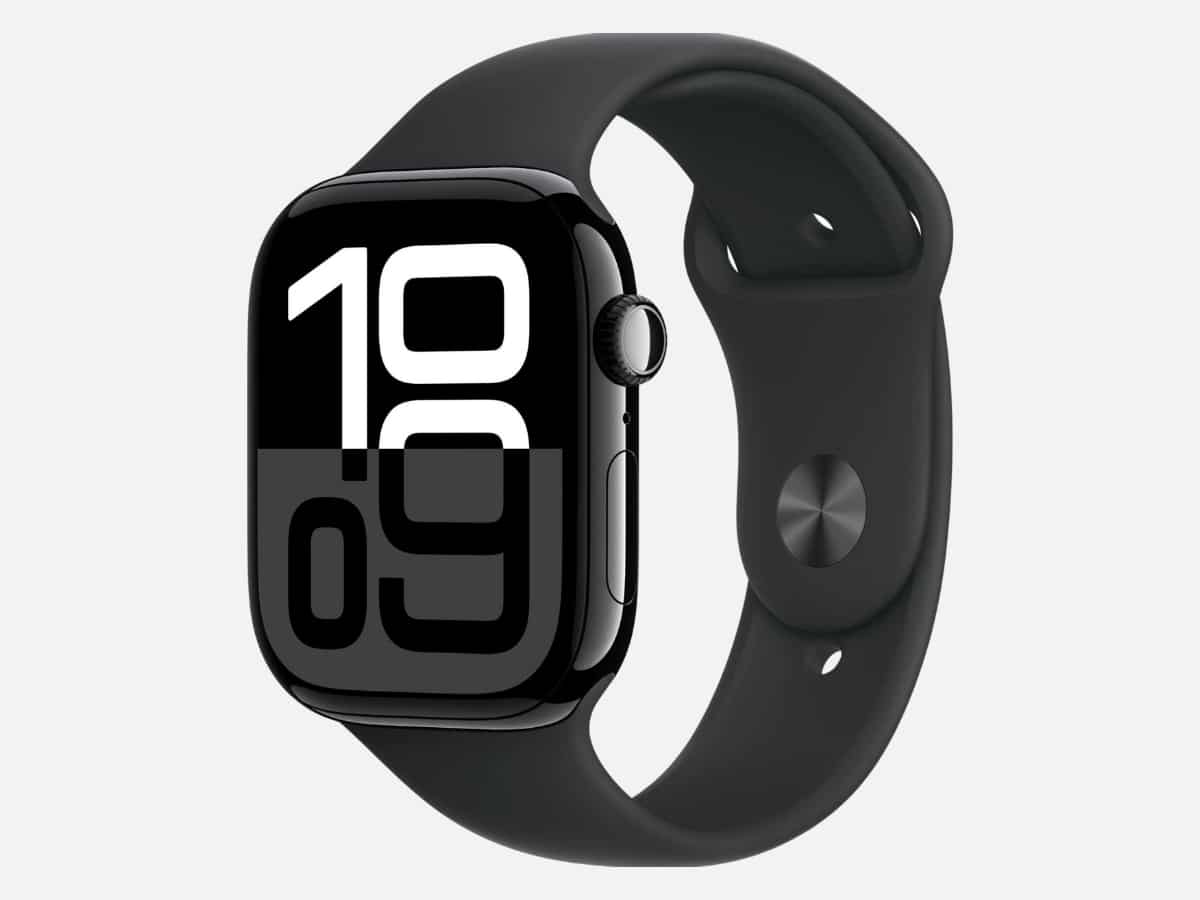
The Apple Option: Apple Watch Series 10
Pros: Excellent display, unmatched iOS integration, robust fitness tracking, versatile app offering
Cons: Exclusive to iPhones, bad battery life, Apple Tax
- Size: 42mm or 46mm
- Compatibility: iOS
- Display: OLED Retina display, up to 2,000 nits
- Battery life: 18 hours, up to 36 in low-power mode
- Price: $649 to $1,279
If you’re living in the Apple ecosystem, there is really only one choice for the best smartwatch. The latest Apple Watch Series 10 is a very impressive piece of kit, bringing all the best parts of prior generations together with a focus on pairing with the Apple Intelligence-imbued iPhone 16 range.
Compared to the previous Watch Series, the Series 10 is thinner, bigger, brighter, and lighter, with a more rounded design and a wider aspect ratio. The impressive OLED Retina display delivers around 30 per cent more real estate than older models, which should help make some text-heavy applications, like mail and messages, a bit easier to parse.
The watch also has some impressive fitness integrations, care of watchOS 11, such as the new Vitals app, which provides a place to check in on your daily health status, as well as the Training Load app, which focuses instead on helping you measure your workouts more precisely.
It comes in a few different configurations, ranging from a 42mm to 46mm watch face, as well as a titanium or aluminium finish, but they’re all essentially the same watch. They aren’t the same price however, ranging from $649 to $1,279, so think carefully before you get your heart set on the best of the best.
In saying that, the battery life is poor: get used to charging your watch at the end of every day unless you want it to live in low-power mode.
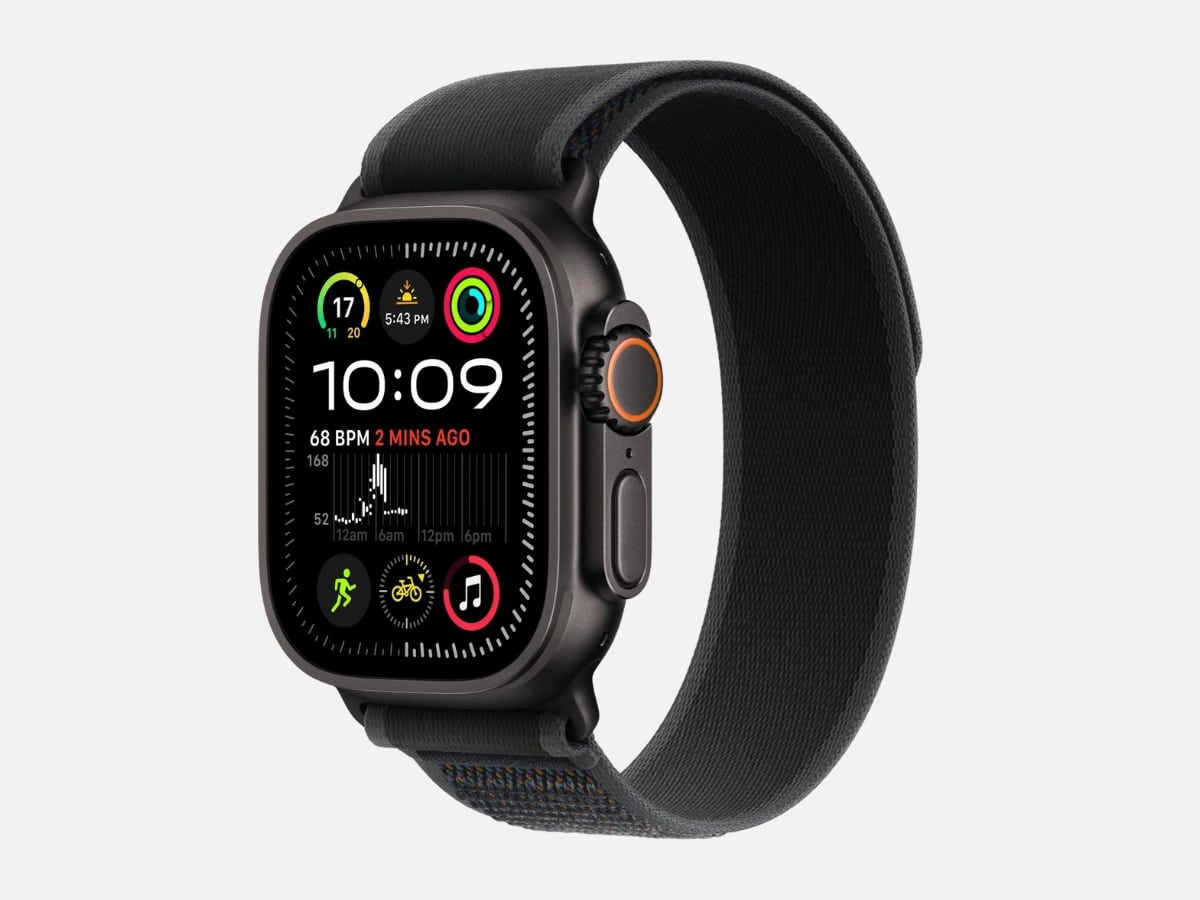
The Apple+ Option: Apple Watch Ultra 2
- Case: 49mm titanium
- Compatibility: iOS
- Display: Retina display is up to 3000 nits
- Battery Life: Up to 72 hours in Low Power Mode
- Price: from AUD$1,399
When everyone expected Apple to go ‘Pro’ with its high-end Apple Watch, they zagged and went ‘Ultra’. They brought to the table a titanium cased 49mm monster with up to 72 hours of battery life, a redesigned Compass app for explorers that now includes longitude, elevation and incline as well as an orienteering view, all powered by watchOS that features a host of new running metrics to measure performance, such as Stride Length, Ground Contact Time, Vertical Oscillation and Running Power. New Workout Views, such as Segments, Splits and Elevation.
It marks the beginning of a new era for smartwatches, those that want a do-everything device that offers more than text message notifications and calling capability. The market is asking for performance smartwatches that can make anyone an athlete, and Apple delivered. If you’re an iPhone user looking for the most powerful smartwatch, this is our top pick. The software integration is second to none, as is always the case with Apple.
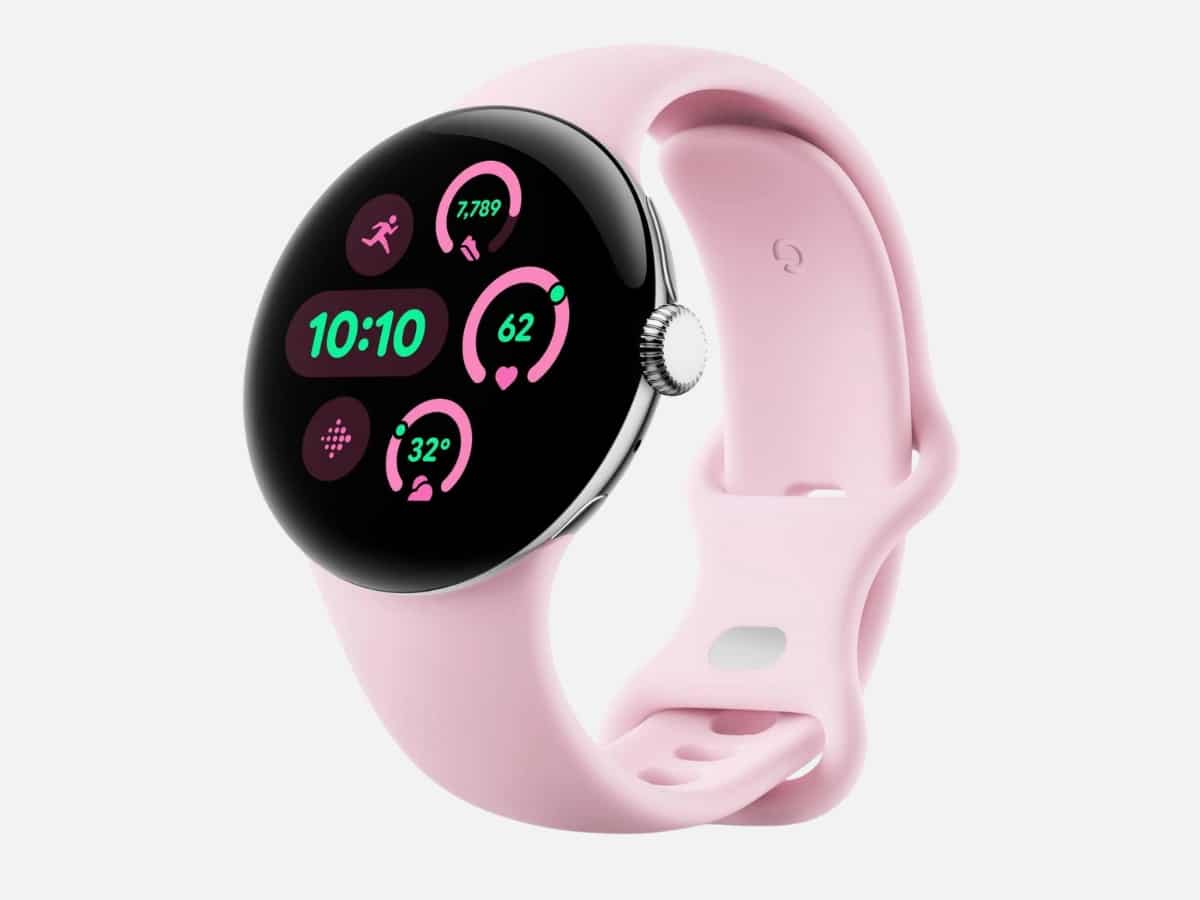
The Google Option: Google Pixel Watch 3
Pros: Great running integrations, great for Google fanatics, beautiful screen
Cons: Average battery life, features locked behind Pixel phones
- Size: 41mm or 45mm
- Compatibility: Android
- Display: AMOLED Actua display, up to 2,000 nits
- Battery life: 24 hours, up to 36 with battery saver
- Price: $579 to $839
For all intents and purposes, the Pixel Watch 3 is the smartwatch Google should have launched from the start. It ticks pretty much all of the boxes you’d need from a smartwatch, while providing some impressive features for those of us using Pixel phones, such as the ability to record audio through it, and control your phone’s camera from afar.
The new Pixel Watch has also made some huge strides in its support for runners (ha ha), such as the ability to calculate and record step cadence, vertical oscillation, and stride length, as well as being able to create custom workouts which can be accessed by the press of a button. Pairing with Google Fit, the Pixel Watch will also let you know if you should be pushing yourself at the gym or prioritising recovery, which is a nice feature.
The Watch 3 is also the first of Google’s wearables to come in two sizes, which brings with it a bigger screen and a longer-lasting battery life (something the 41mm model desperately needs).
There’s less incentive to pick up a Pixel Watch if you’re not already using Google’s Pixel phones, but it will work with any Android phone, just with fewer capabilities.
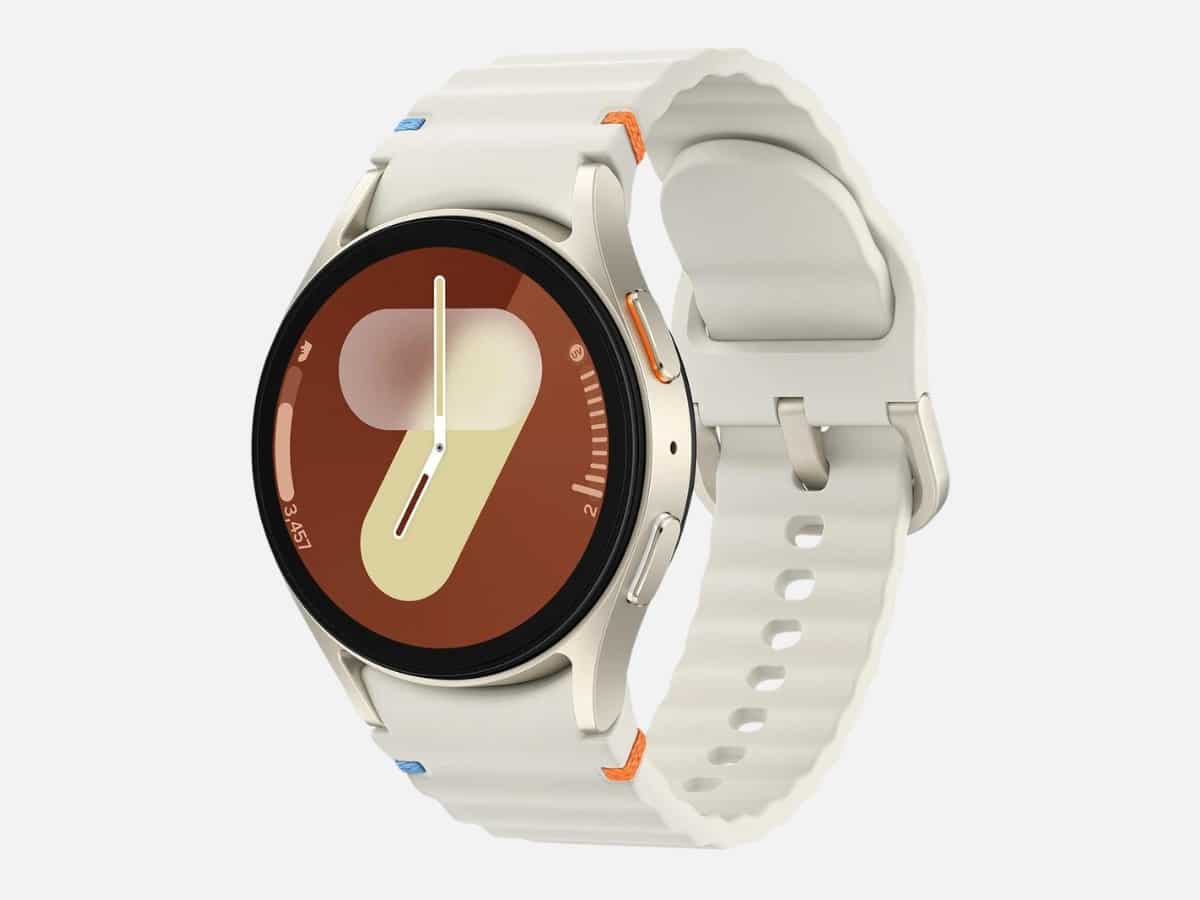
The Samsung Option: Samsung Galaxy Watch 7
Pros: Simple and slim design, good fitness integration, works best with Samsung devices
Cons: Average battery life, features locked behind Samsung phones
- Size: 40mm or 44mm
- Compatibility: Android
- Display: Super AMOLED display, up to 2,000 nits
- Battery life: 24 hours
- Price: $549 to $699
If you’ve been around the tech world for any amount of time, you’ll know that Samsung makes basically everything: including smartwatches. Thankfully, the Galaxy Watch 7 is a solid wearable that does just about everything you’d want it to do, though, in a pattern I’m sure you’re starting to see, does more if you’re using it with a Samsung device.
The Galaxy Watch 7 features a more powerful chip than its predecessor, as well as an enhanced ‘BioActive’ health sensor, which improves on the device’s overall performance and how accurate it is at tracking your health and fitness. Alongside that, Samsung introduced sleep apnea detection, AI-powered wellness insights, and a feature that lets you know when you should be recovering from workouts.
Battery life is average at best, though fast charging does help. As is the case with each of its competitors, if you want to get the most out of the Samsung Galaxy Watch 7 you’ll want to make sure it is charging overnight, which makes it difficult to utilise some of the sleep-related features.
In all, it’s a great smartwatch for the Samsung minded, and won’t cost a motza unlike it’s Ultra brother.
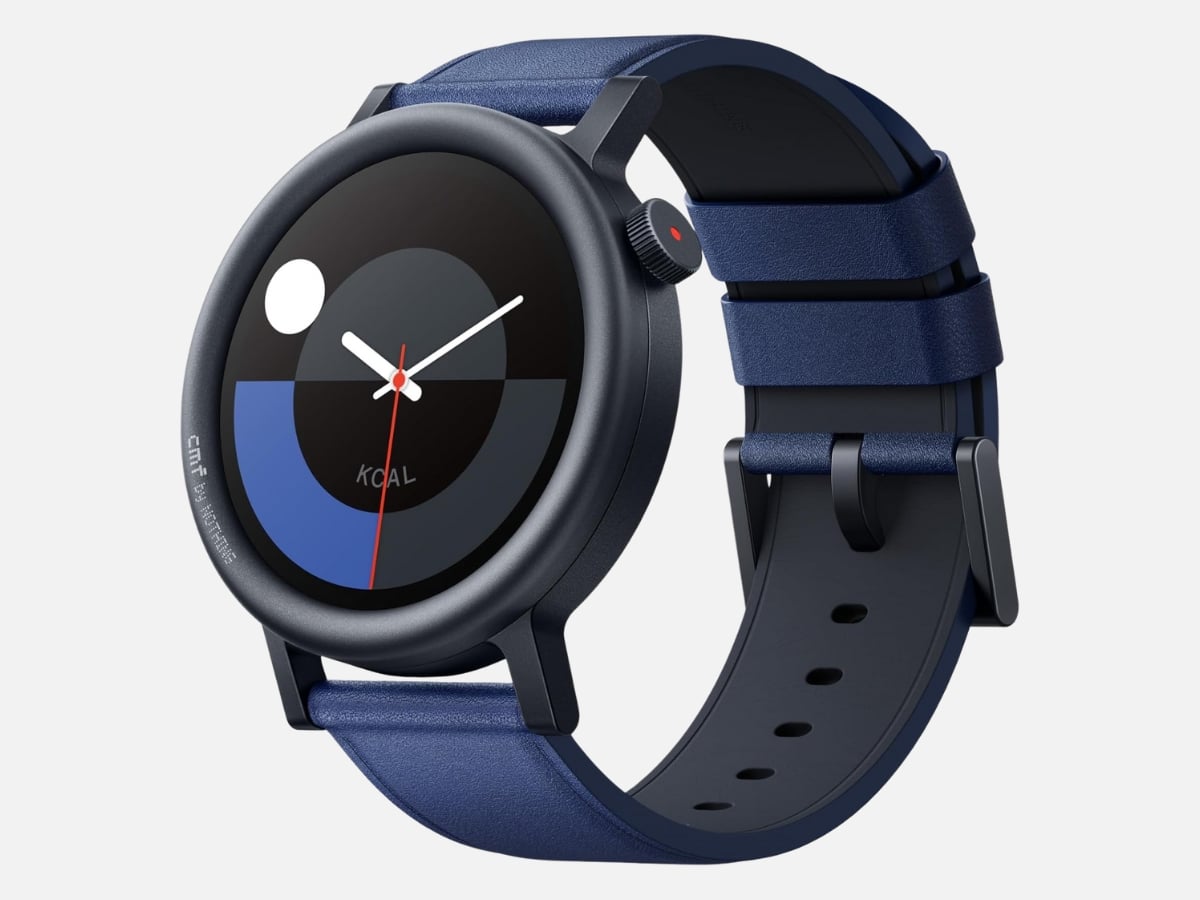
The Budget Option: CMF Watch Pro 2
Pros: Affordable, highly customisable, battery is fantastic
Cons: Some issues delivering notifications, low brightness, looks and feels cheap
- Size: 42mm
- Compatibility: iOS and Android
- Display: AMOLED display, 620 nits
- Battery life: 11 days of typical use, 45 days in power saving mode
- Price: $99
Nothing really is an impressive company, and its budget brand CMF is no exception. The business wants to bring most of the modern tech advancements to people at a lower price, which it largely is succeeding at. But, in shaving hundreds of dollars off the asking price, you’re paying for it elsewhere.
But let’s start with the positives: the CMF Watch Pro 2 has over 100 digital watch face designs to choose from, as well as an interchangeable bezel on the device’s aluminium body. What this means is that your Watch Pro 2 could look a fair bit different to someone else’s, and opens up the potential of custom bezels being made by the maker community (something CMF has encouraged with its phone).
Plus, its battery life is fantastic, with 11 days of juice for normal use, and up to 45 days in power saving mode. Now, in power saving mode, the watch essentially forgoes all non-essential features and basically becomes a regular timepiece, but if you need it to stay on for a significant period of time between charges, it can certainly do it.
But, getting to that $99 price does require cuts somewhere: the screen is far dimmer than others on the market, and the unit itself lacks the premium finish of some of the competition. To be fair, it isn’t a luxury piece, and if you’re not after one, the CMF Watch Pro 2 could be what you’re looking for.

The Long-lasting Option: Garmin Instinct 2X Solar
Pros: Lightweight, very comfortable, battery gets charged by sunlight
Cons: Thick and bulky, style isn’t a focus
- Size: 40mm, 45mm and 50mm
- Compatibility: iOS and Android
- Display: Monochrome transflective display
- Battery life: 40 days of typical use, Unlimited with solar power
- Price: $679 to $769
If you want something that is going to survive almost anything you throw at it, while going months between charges, Garmin’s got your back. While the Instinct 2X Solar uses a monochrome display, and isn’t exactly fashionable, these sacrifices enable it to do things more luxury-focused smartwatches can only dream about: like staying topped up by having access to the sun.
It’s in the name, so it shouldn’t be a huge surprise, but the Instinct 2X Solar is indeed solar powered and can theoretically go without manual charging for as long as you keep it outside in the sun. This means around three hours of sunlight per day, which is totally possible depending on your work. If you work at a desk like me, it’s more likely that it’ll just get some extra juice over the weekend.
Regardless, the Solar lasts between charges for around 40 days, and doesn’t skimp on any of the features you’d expect a smartwatch to have. It’ll track your health and fitness, deliver messages, track your sleep, and can even make contactless payments.
Plus, it comes in a bunch of different colours and styles, so get the one that matches your fit and get out there!
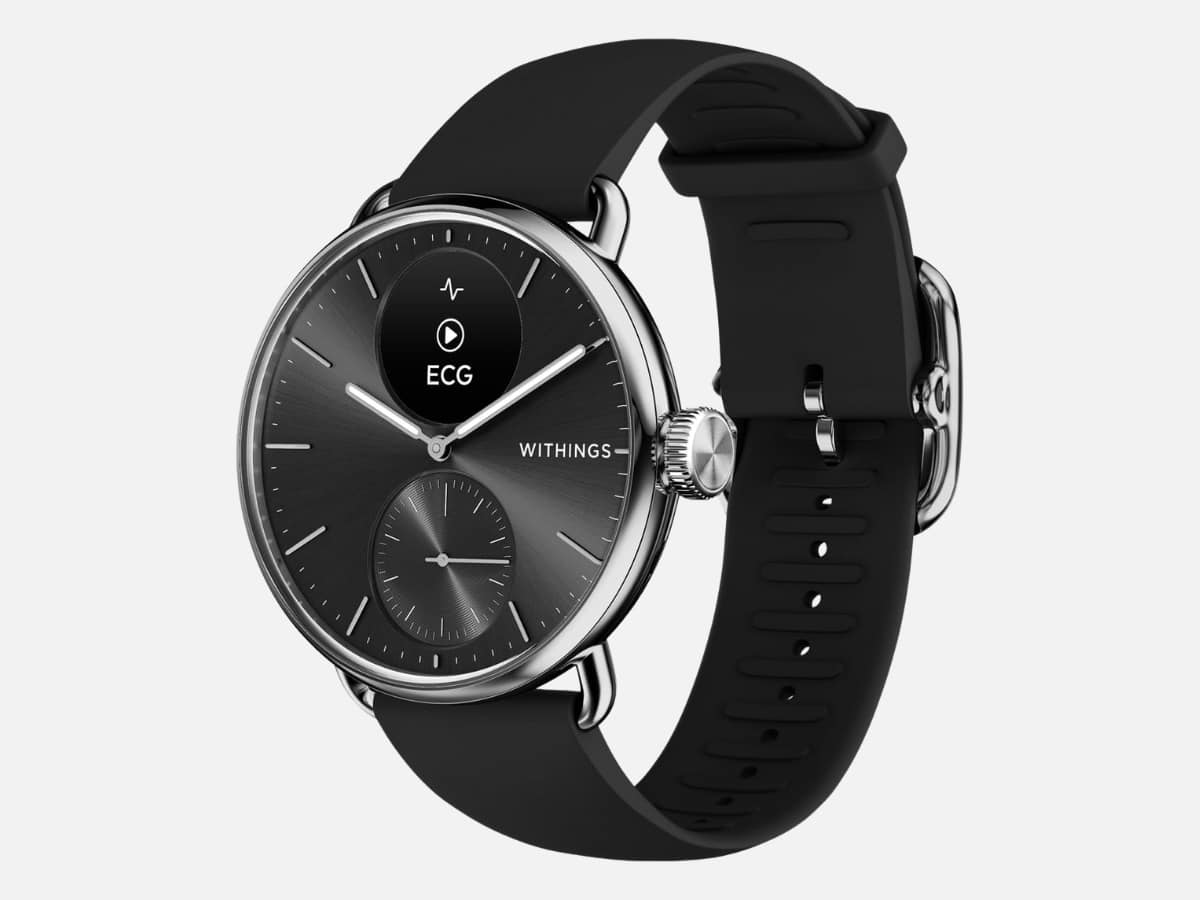
The Stylish Option: Withings ScanWatch 2
Pros: Looks indistinguishable to a mid-range watch, good battery life, great health features
Cons: Charging process is odd, limited ‘smart’ functionality
- Size: 38mm or 42mm
- Compatibility: iOS and Android
- Display: Grayscale OLED display
- Battery life: 30 days of normal use
- Price: $599
Now, Withings doesn’t call the ScanWatch 2 a smartwatch. Rather, it’s a hybrid watch: looking to combine the best of both worlds. We’d say they’ve done a pretty good job, considering you get a lot of the health and fitness features you expect in the shell of a regular, nondescript watch.
If you’re looking for a watch that isn’t going to turn any heads, the ScanWatch 2 will deliver that in spades. That’s not to say it’s unremarkable – rather it blends in, as does any good watch. However, sitting on the traditional watch face is a smaller dial, which tracks your daily steps, and a grayscale OLED display that can be activated by pressing down on the watch’s crown. This is where you’ll get notifications, or access the watch’s smart and fitness features.
But let us be clear, you’re not going to be speaking into the watch to send voice memos, paying with it, or even responding to texts. It is, essentially, a tiny second display you can use to track what is coming to your phone when you’re not at liberty to pull it out, or a good fitness buddy. It’ll track your heart rate and let you know of any issues or irregularities, as well as (using the Withings app) send PDFs of such measurements to medical professionals, should you want to share the info.
It has good battery life at 30 days, but requires an odd set-up to charge. See, the watch doesn’t have an input. Rather, you clip it into a small clamp, which is then plugged into a USB-C cable to charge it. It works fine, but is just an odd addition.

The Basic Fitness Option: Fitbit Charge 6
Pros: Syncs well with Google products, lightweight, improved heart rate accuracy
Cons: Battery is iffy, GPS can be unreliable
- Size: 36mm x 23mm
- Compatibility: iOS or Android
- Display: AMOLED display
- Battery life: 3 days of normal use
- Price: $259
The Fitbit Charge 6 is the best entry-level fitness watch on the market today. It allows you to track workouts, measure your heart rate, and even control a few Google-aligned apps, all from a small, durable frame. Fitbit isn’t new to wearables, and chances are you already know and trust the brand, but there are some measurable improvements between the Charge 5 and Charge 6 that make it a decent upgrade.
For one, its heart rate measurements are far more accurate now, and no longer fail to keep up when activity gets rigorous. Similarly, some new accessibility features, such as down-tap to zoom, should help with reading details on the tiny screen.
It’s still not perfect, though. Earlier models of the Fitbit Charge have been known to see battery life fall off a cliff, and with no changes to the internal battery, there’s no reason to suspect this has changed. Plus, the Charge 6 still delivers unreliable GPS tracking when going for hikes, walks, runs, etc.
However, if you’re after a fairly quick and dirty fitness wearable the Fitbit Charge 6 will more than deliver.
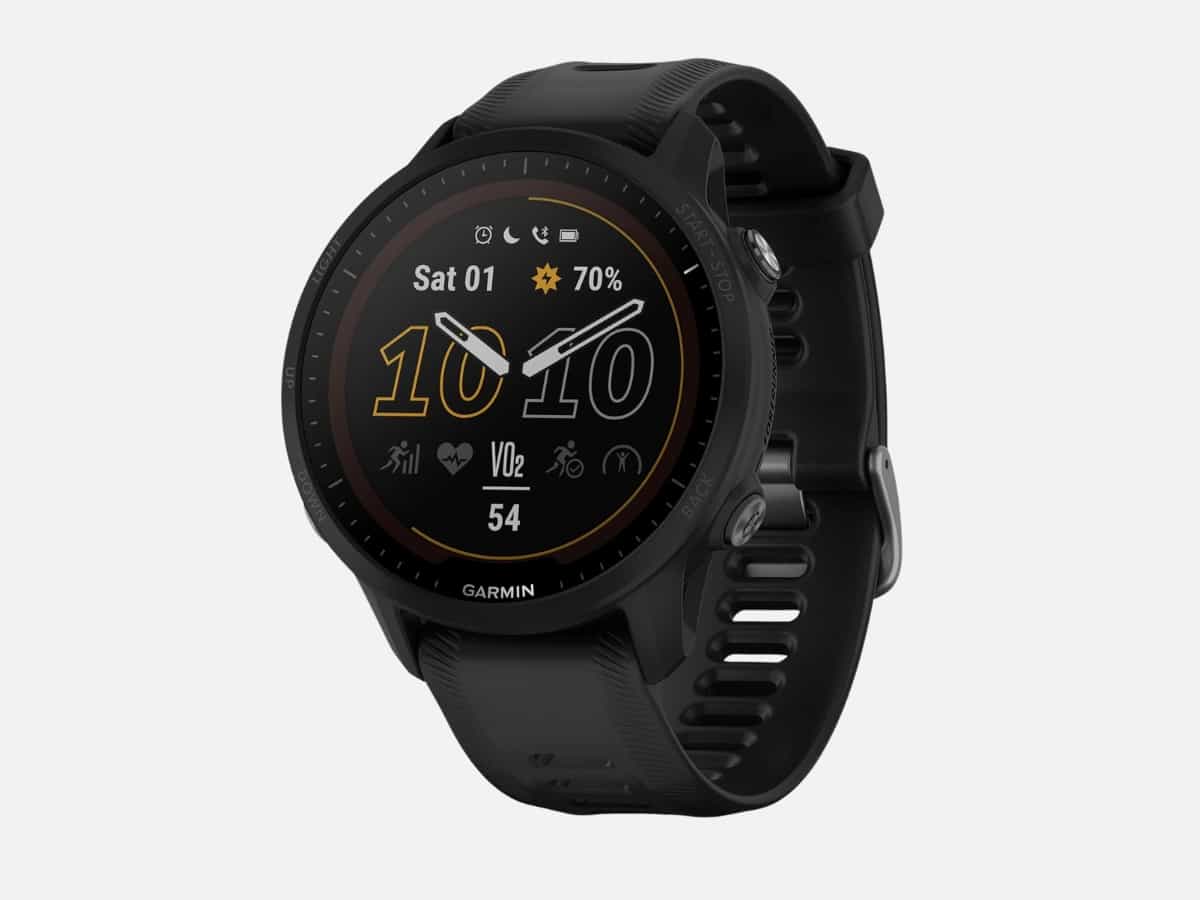
The Athlete Option: Garmin Forerunner 955 Solar
Pros: Multi-band GPS is very impressive, running features are fantastic, comfortable
Cons: Limited colours available, screen is average, expensive
- Size: 46mm
- Compatibility: iOS and Android
- Display: MIP display
- Battery life: 20 days of standard use, 40 hours in GPS mode
- Price: $999 or $1,099 for Solar
If you’re an athlete of any kind, chances are you’re interested in the minutiae of your performance. Vertical oscillation isn’t something most people care to track, but you? Any way to become more energy efficient could improve your overall performance, and that is the entire goal of a watch like Garmin’s Forerunner 955. It only comes in two colours, black and white, and features a dull memory in pixel (MIP) display (which only shows 24 colours), but this device isn’t meant to be flashy. If you need a nicer screen, pick up the Garmin Forerunner 965: you’ll get a nice AMOLED display, and sacrifice some battery life while you’re at it.
In our opinion, the 955 finds the right balance between delivering some seriously impressive fitness tracking, including multi-band GPS, into a comfortable and approachable smartwatch that will just keep going. It has a battery life of around 20 days of standard use, and around 40 hours when using GPS, but you have the option of picking up a solar variant that will recharge as you use it in sunlight. Which, if you’re running, you probably will be.
The 955 is ideal for tracking long-term fitness journeys, as well as jumping into marathons, triathlons, or even multiple different sports. It’ll go the distance, and provide insights along the way, such as daily ‘training readiness’ scores, heart rate variability, suggested workouts, as well as a real-time measure of your endurance and stamina – letting you know how likely you are to finish the current work out, given how much you’re exerting yourself.
It really is a fantastic device, and will go the extra mile along with you.
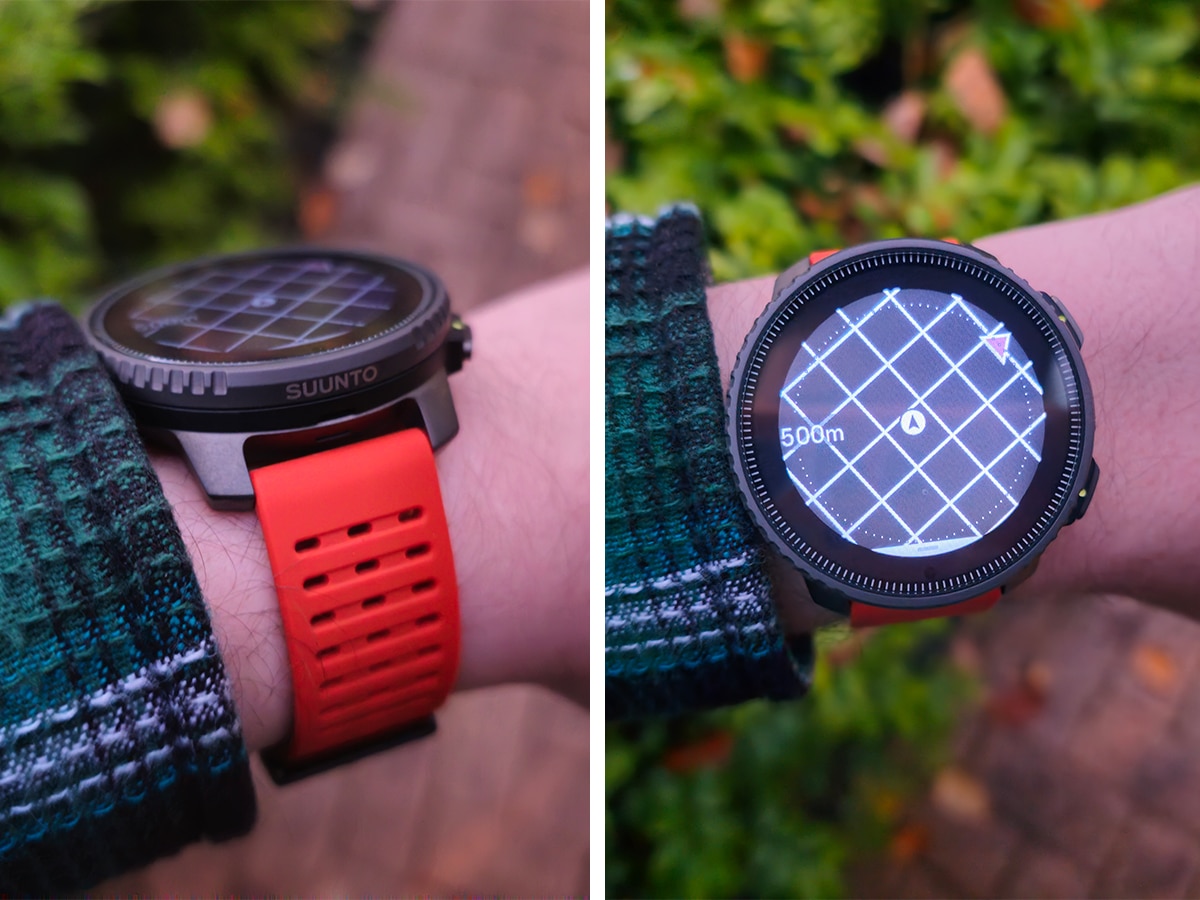
The Athlete Alternative: Suunto Vertical
- Case: Grade 5 titanium (74 grams), tested to MIL-STD-810H specifications.
- Compatibility: Android and iOS
- Storage: 32GB of map storage
- Battery life: up to 85 hours with best accuracy, 500 hours in Tour mode, and 60 days in daily use.
- Price: from $1,299 AUD
We’re impressed by the amount of tech Suunto squeezed into the Vertical Titanium while still keeping it a relatively lightweight device (74 grams). At face value, it looks like just another GPS adventure sports watch, but it’s extremely comfortable on the wrist, has a large 1.4-inch screen, and even features free offline maps. This includes heatmaps, 3D maps, and road surface-type layers that are important for runners.
Beyond all else, it’s the battery life that really stands out when you compare it to traditional smartwatches from brands like Apple and Samsung. In our testing, we managed to eke out more than three weeks of battery when combined with the in-built solar and it still had more than 20% battery before we decided to top it up again. We’re power users and this includes alerts through our Google Home doorbell and all chat notifications and messages. We haven’t seen a smartwatch perform this well since the Huawei GT 2 Pro we tested a few years ago.
Those who are looking for a smartwatch for activities, definitely keep this one in mind. The Suunto Vertical has more than 95 sports modes to choose from, with everything from trail running to swimming included. You can even link it with Strava, Training Peaks and Komoot.
Finally, and in terms of construction, the Suunto Vertical we tested was made from grade 5 titanium (74 grams) although there’s also a stainless steel version (86 grams) both are tested to the highest military standard of toughness (MIL-STD-810H), designed in Finland, and made from 100% renewable energy. Priced at $1,299 AUD it’s far from the cheapest smartwatch on the market but with so many standout features there’s a reason it sits at the pointy end of this list.
Shop at Suunto Shop at Find Your Feet
Want More? We’ve got you covered
If none of these watches buckled your clasp, there are dozens of other options out there. In terms of the most common use cases, however, here are the upgrades you might be looking for:
- For Android Users: Samsung Galaxy Watch Ultra ($1,299): A square-faced upgrade to the Galaxy Watch, the Ultra delivers better performance and battery life in a similar form factor, while also tapping into Galaxy AI.
- For Athletes: Garmin Forerunner 965 ($999): The 965 brings a clearer, brighter AMOLED display to the Forerunner series, which does hurt battery a bit, but makes it more usable as a regular smartwatch between marathons.
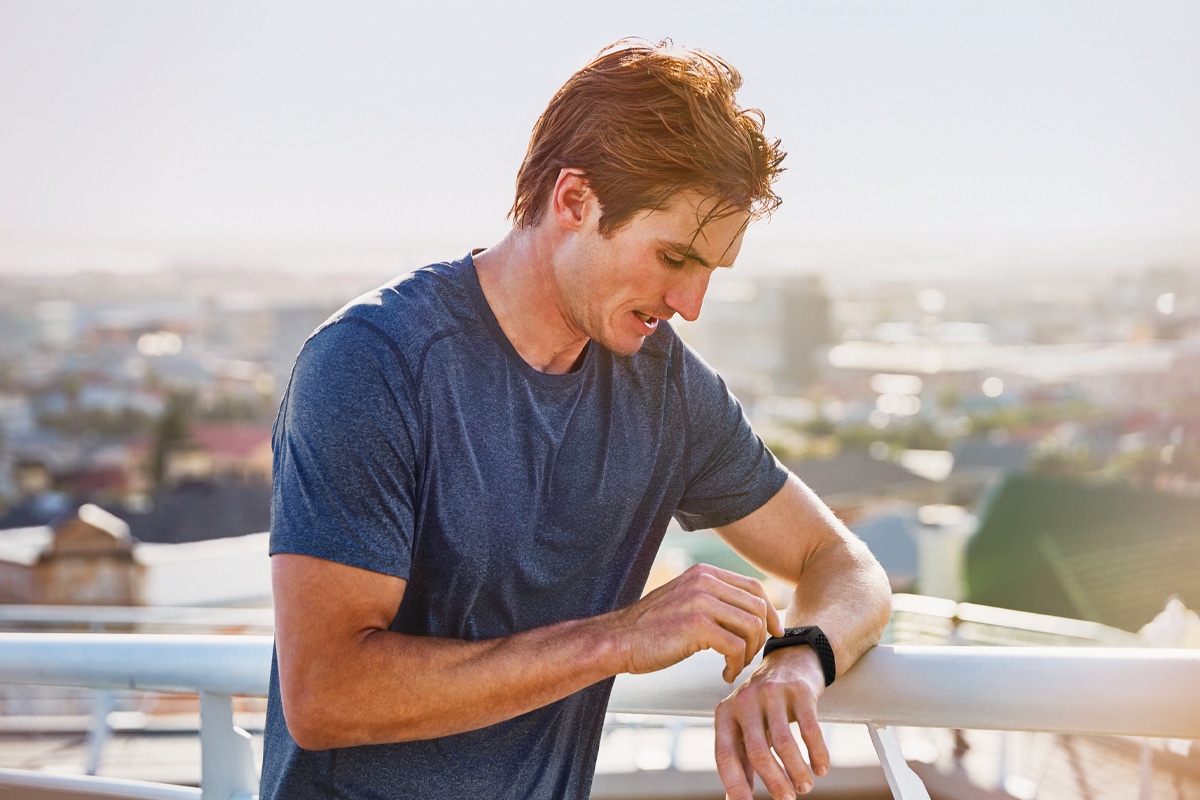
What’s the Difference Between a Smartwatch and Fitness Tracker?
For some time now, there has been misinformation that has differentiated a fitness tracker from a smartwatch. A fitness tracker is a band with sensors that tallies up data and sends it to your smartphone, while a fitness watch is veritably an extension of your smartphone; it allows you to keep track of your fitness progress, daily activity and even check your schedule, social media, texts and email.
Most smartwatches now act as fitness trackers, but fitness trackers rarely act as smartwatches.
What Can a Smartwatch Do?
Wearable technology has come a long way since the early days and smartwatches shoulder much of the load. Put simply, the best smartwatches can do a lot of things. From tricks and features that may improve your life, such as health tracking and location monitoring, to more simple communication aspects like talk and text, smartwatches now do many of things you formerly had to purchase a specialised device for.
The wearable computer looks like a standard watch, however, it bridges the gap between smartphone and fashion accessory, and they’ve been doing so for some time.
Back in the 1970s, Hamilton Watch Company released the first digital watch ever; the Pulsar. The brand was quickly acquired by Seiko, with the 1982 variation offering 24-digit storage. This innovation is widely regarded as the birth of the modern smartwatch, signalling the first watch to cop user-programmable memory. Nowadays, it’s not uncommon to see the best smartwatches boasting 8GB worth of memory, making that original 24 digits look minuscule in the process.
But more than just punching numbers and equations, smartwatches have evolved to be an everyday item designed to drastically improve their wearers’ lives. The addition of health and fitness tracking, sleep data collection and communication has streamlined a number of previously unattainable practices. In fact, a doctor in the US recently noted that his first-generation Apple Watch picked up a critical heart condition that had, until that point, gone unnoticed. Dr Donald W. Milne from Antelope Valley Hospital believes without the smartwatch, he would have succumbed to the health condition without even knowing he had it. Turns out those smartwatches might actually be worth the price.
What Can a Fitness Tracker Do?
A fitness tracker can help someone monitor their daily activities. It helps in setting workout goals such as meeting a training goal, burning a certain number of calories in the day, and how much and often you should drink water to keep hydrated. Each fitness tracker is accompanied by an app that has various options. And here’s where it gets technical. Trackers rely on accelerometers; these are devices that detect the body’s movement and convert it into data.
The data are sent to an application on your smartphone — or other device linked to your tracker — where software calculates the total steps taken, distance travelled and calories burned. All keep track of the steps you take each day, and almost all track the time and intensity of your activity and estimates your caloric expenditure. In fact, many of them notify you when you need to get up and moving — but that’s when been bumming around all day.
Many also record the time you spend sleeping, your restlessness and how often you wake up during the night and allow you to compare your physical activity from day to day and week to week.
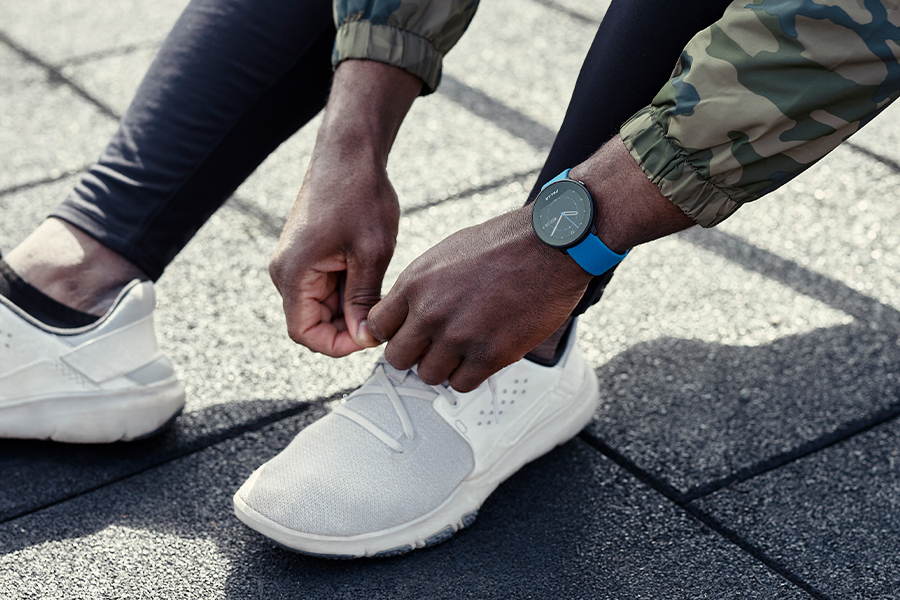
What to Consider When Buying a Smartwatch
When it comes to buying the best smartwatch you can find, there are a few considerations you need to be aware of. While regular watches and timepieces are characterised by their calibre and movement, smartwatches have different stipulations. Here is what to consider when looking for the best smartwatch;
- Price – With smartwatches, you can find a solid piece for far less than you would a luxury chronograph or automatic. While on the entry-level spectrum, you can find affordable smartwatches from around $100, the luxury price tag associated with others, such as Tag Heuer’s Connected will be in the thousands. As expected, the cheaper the price tag, generally the less smartwatch features it will have.
- Size – like all good timepieces, it pays to find a smartwatch that suits your wrist size. Check the case size and weight before purchasing.
- Water-resistance – While most modern watches will be water-resistant to some degree, your smartwatch should definitely have some significant waterproofing. As most smartwatches are used in conjunction with fitness activities, you want to make sure you won’t destroy it with sweat.
- Features – This really comes down to what you plan on using your smartwatch for. The best smartwatches for fitness offer data analytics around your step count, heart rate, sleep tracking and mobility. Similarly, if the workflow is a major concern, seek out a smartphone with communication capabilities and memory.
- Style – Like any good watch, your smartwatch style says a lot about you. Be sure to temper your features with an aesthetic that mirrors your personal and professional pursuits.
You’ll also like:
































